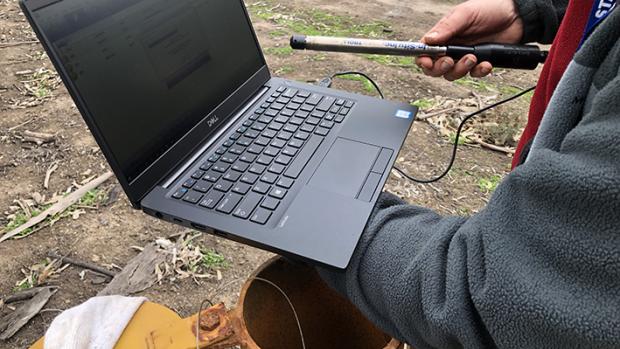Loading
Soils ain’t soils as Gunbower Forest red gums motor along

Monitoring over the past 18-months at Gunbower Forest has revealed how trees and wetlands are protected from groundwater intrusion.
The North Central Catchment Management Authority (CMA) installed electronic groundwater loggers in 12 bores across the forest floodplain in 2021 to monitor the water table response to environmental flows, floods, and periods in between.
The loggers confirmed what the geologists had expected; flows across Gunbower Forest resulted in minimal impacts to groundwater levels.
“The clay soils of the forest floodplain have a high capacity for shrinking and swelling,” North Central CMA Project Manager and soil expert Phil Dyson said.
“When they are dry, they crack, but when water moves down them, they swell, creating an almost impenetrable layer between any water coming down and the water table.
“This traps the water in the perfect spot for the red gums and aquatic vegetation of the forest, and means the salinity stays out of the root zone.”
Mr Dyson said the loggers measured the height of the water table during a flood and multiple water for environment flows.
“It can be easy to think that water lying around for a while can result in a high water table and salinity problems, as is the case with irrigation areas around the region,” he said.
“But that’s not happening in the forest at all. There was no impact on the water table during the floods and the environmental watering.
“And the water table is at its deepest in the centre of the forest.”
Mr Dyson said that was great news for red gums, which have a huge appetite.
“The red gums in Gunbower Forest are rampant drinkers,” he said.
“Even though red gums across the region have evolved to deal with salt, the ones in Gunbower Forest typically take their water from anywhere down to 8 to 10 metres above the water table.
“This is why they respond so well to floods and environmental flows. They have evolved with water seven years in every 10 on average, so regular fresh water in winter and spring is gold to them.”
